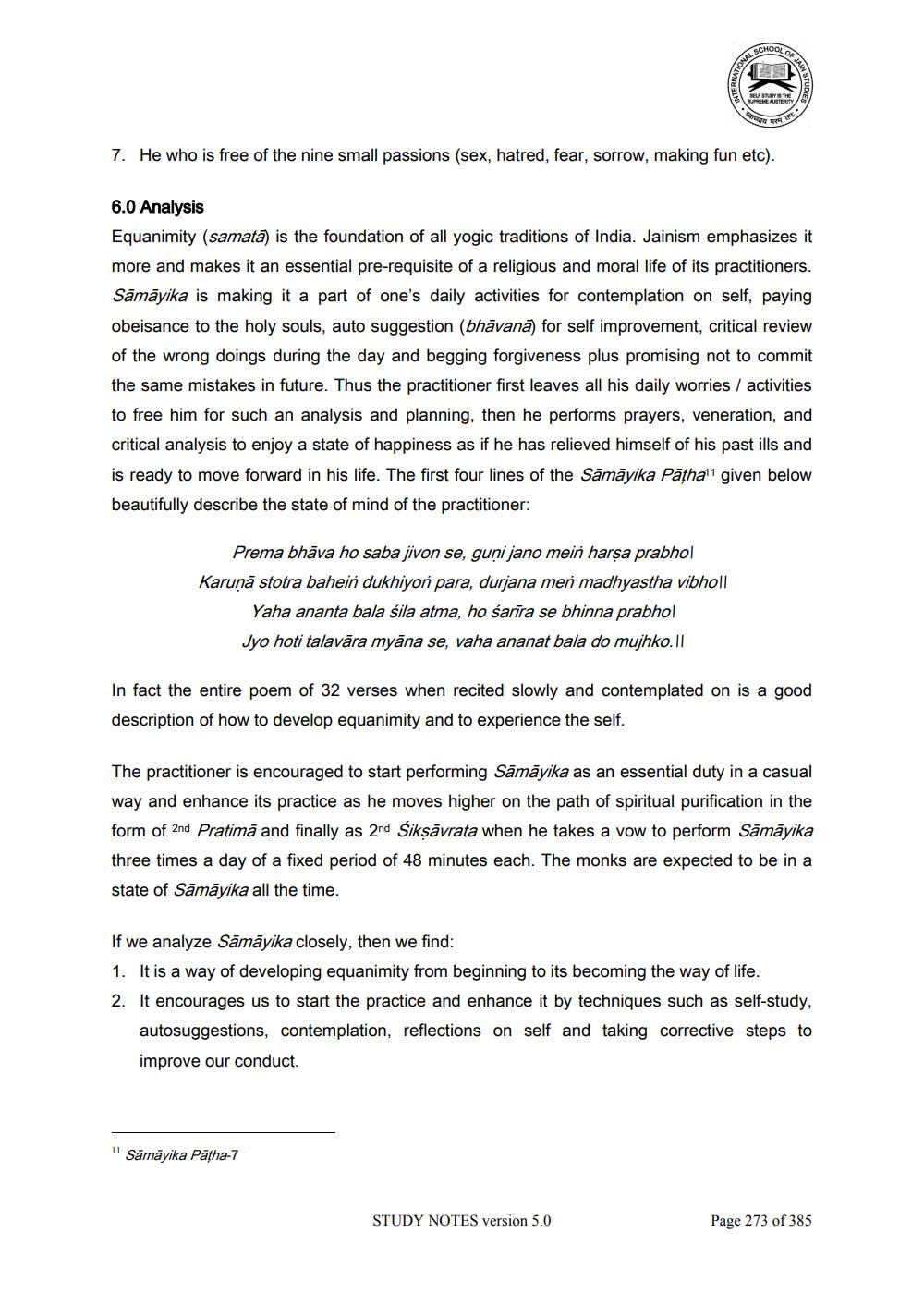________________
7. He who is free of the nine small passions (sex, hatred, fear, sorrow, making fun etc).
6.0 Analysis Equanimity (samata) is the foundation of all yogic traditions of India. Jainism emphasizes it more and makes it an essential pre-requisite of a religious and moral life of its practitioners. Sāmāyika is making it a part of one's daily activities for contemplation on self, paying obeisance to the holy souls, auto suggestion (bhāvanā) for self improvement, critical review of the wrong doings during the day and begging forgiveness plus promising not to commit the same mistakes in future. Thus the practitioner first leaves all his daily worries / activities to free him for such an analysis and planning, then he performs prayers, veneration, and critical analysis to enjoy a state of happiness as if he has relieved himself of his past ills and is ready to move forward in his life. The first four lines of the Sāmāyika Pāthat given below beautifully describe the state of mind of the practitioner:
Prema bhāva ho saba jivon se, guni jano mein harsa prabhol Karunā stotra bahein dukhiyon para, durjana men madhyastha vibholl
Yaha ananta bala sila atma, ho śarīra se bhinna prabhol Jyo hoti talavāra myāna se, vaha ananat bala do mujhko.||
In fact the entire poem of 32 verses when recited slowly and contemplated on is a good description of how to develop equanimity and to experience the self.
The practitioner is encouraged to start performing Sāmāyika as an essential duty in a casual way and enhance its practice as he moves higher on the path of spiritual purification in the form of 2nd Pratimā and finally as 2nd Śikṣāvrata when he takes a vow to perform Sāmāyika three times a day of a fixed period of 48 minutes each. The monks are expected to be in a state of Sāmāyika all the time.
If we analyze Sāmāyika closely, then we find: 1. It is a way of developing equanimity from beginning to its becoming the way of life. 2. It encourages us to start the practice and enhance it by techniques such as self-study,
autosuggestions, contemplation, reflections on self and taking corrective steps to improve our conduct.
11 Sämāyika Patha-7
STUDY NOTES version 5.0
Page 273 of 385




